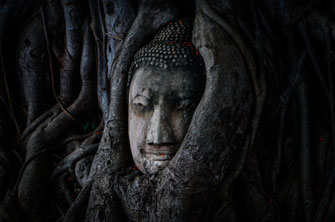🌐 »

We ponder for a long time, thinking back and forth and weighing up whether the long detour is worth it. In the end, we decide on our next destination, even if it means several hours in different means of transportation. We are talking about Sukhothai, a historical park around 430 kilometers north of Bangkok, a highlight on our trip around the world so far with a surprise that leaves us both amazed.


There are various ways to get to Sukhothai. By plane is definitely the fastest but most expensive option. A bus is also on the shortlist. However, as the route is scenically beautiful, the train ultimately wins the race. Our first port of call in the morning is therefore Bang Sue Junction station, where there are regular connections from the country's capital to the north. It's best to check the official website of the Thai railroads for journey times in advance!

There is no direct train connection to Sukhothai. Phitsanulok is therefore our first stopover. After a delay of 5 hours, we finally arrive at the station. It's best to take a tuk-tuk for the short distance between the train station and the bus station. From here, you can only continue on the public buses that run from Bus Terminal 1. With the tickets you have purchased, you can now continue to Sukhothai, 40 kilometers away. Be aware that this bus stops at what feels like every corner to pick up or drop off people, so the journey takes over an hour. We only reach New Sukhothai at sunset. And if you're thinking, hmm, New Sukhothai? Yes, the city is divided into two areas, so pay attention to the address when booking your accommodation. The Historical Park, which is a UNESCO World Heritage Site, is located in Old Sukhothai, around 12 kilometers outside the city proper. There are only a few travelers left at the train station and a friendly employee assures us that a minivan will take us to the ancient ruins, where our accommodation is located, in 30 minutes. After waiting for three quarters of an hour, we and two other couples decide to take a tuktuk for the last few kilometers.

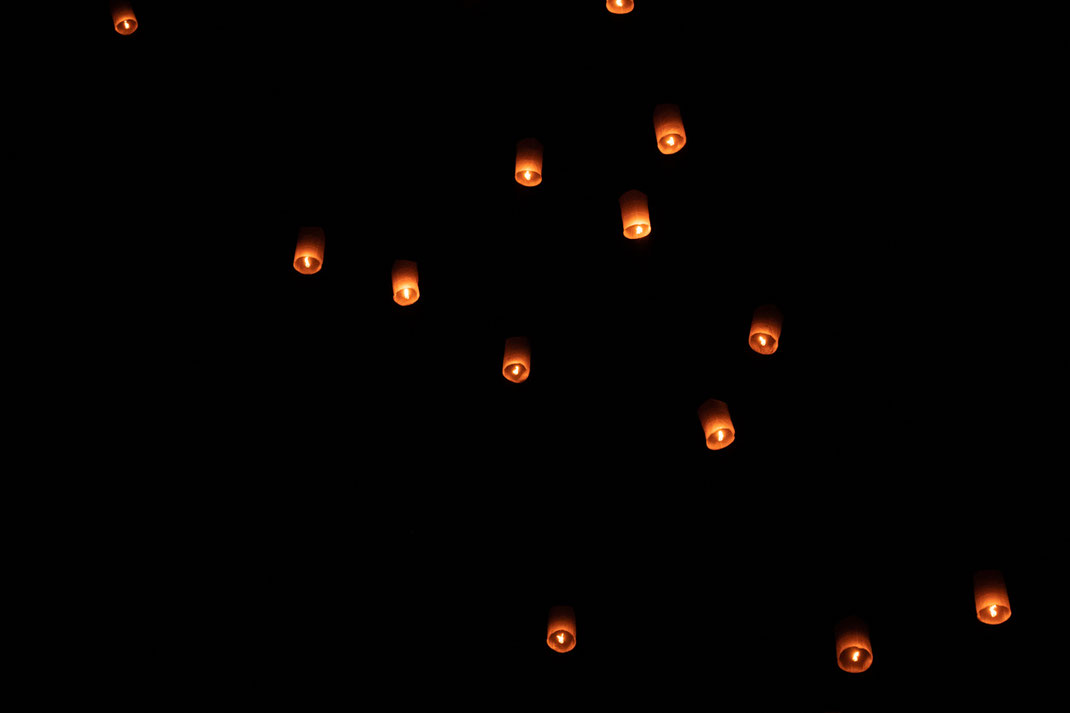
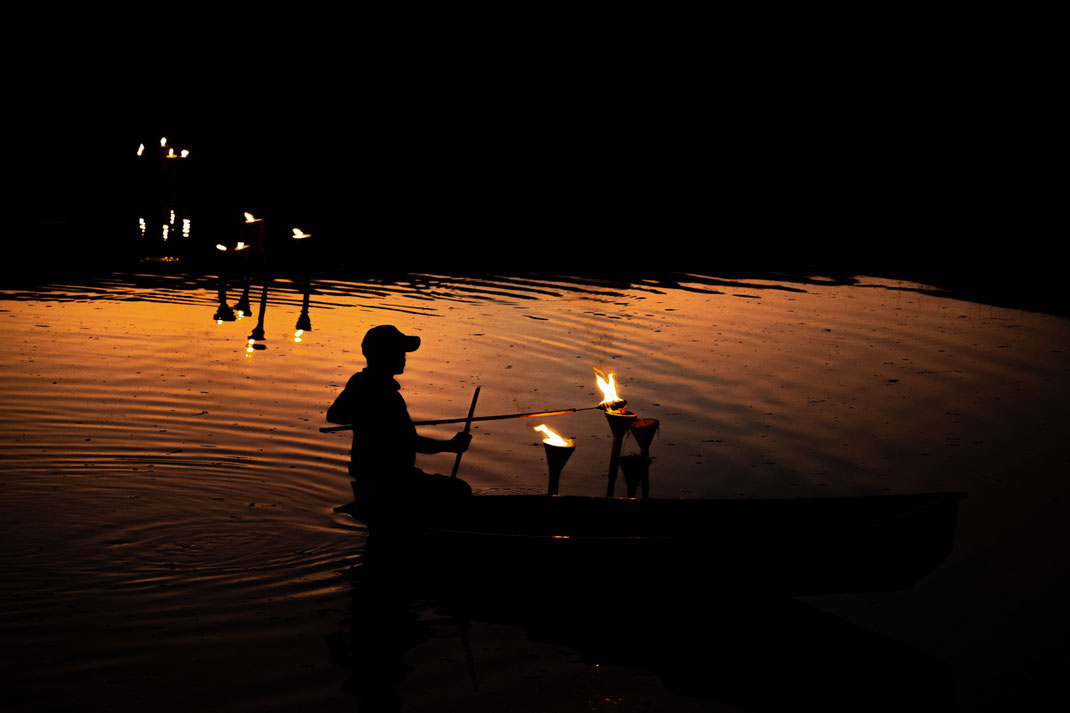
And once there, we are truly amazed as people flock from all directions to the entrance of the 72 km² temple area. The ruins are beautifully illuminated with candles and torches and colorful flower boats float across the ponds. Of course, we know that the Festival of Lights is celebrated throughout Thailand at the beginning of November. But the fact that the festival of candles in Sukhothai begins on October 31st comes as quite a surprise. We have written more about the Loy Krathong festival in a separate blog. We don't think twice, change our clothes and mingle with the locals. In fact, we only meet locals and no tourists that evening, so we are one of the main attractions and manage to take countless photos.

This impression is reinforced the next morning when we rent two bicycles next to our guesthouse for 30 baht (~ 80 cents) each per person to explore the grounds. Admission is free during the festival, otherwise you have to buy a ticket at the ticket counter for 100 baht (~ €2.50) per person. Another 10 baht (~ 25 cents) is also charged for bicycles.


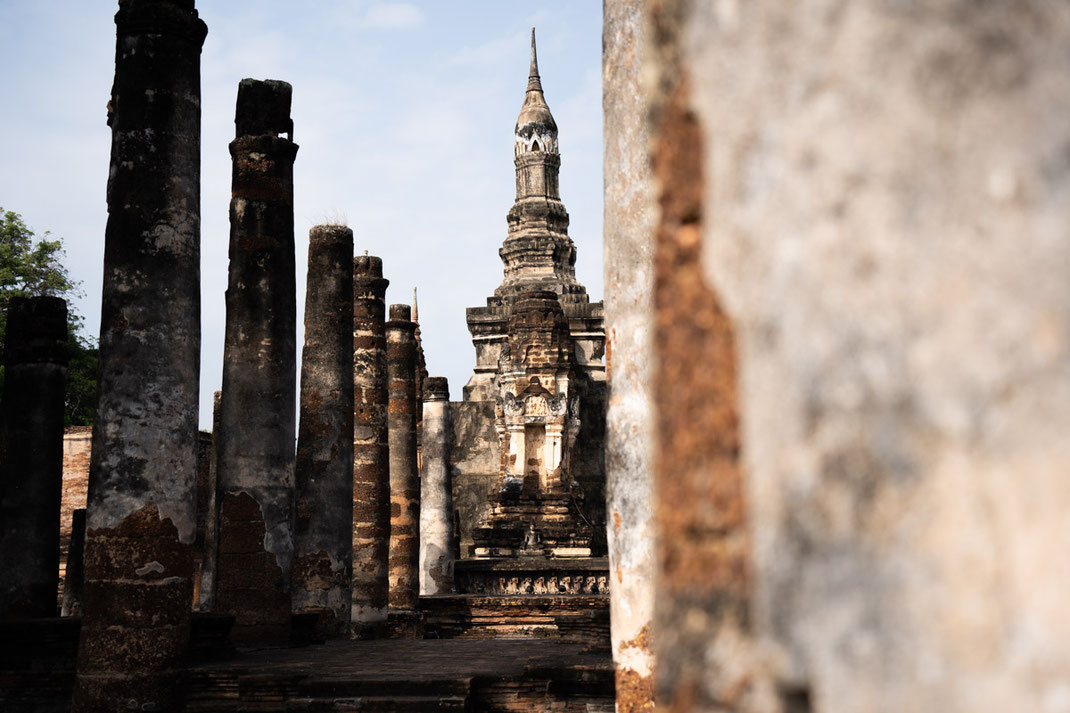
We set off on our bikes, follow the road and end up right in front of the first ruin, Wat Mahathat. This is the most important temple in Sukhothai and also one of the most beautiful in the entire historical park. Built between 1292 and 1347, the entire temple comprised up to 200 chedis. Today, only the impressive Buddha statues among the ruined and dilapidated buildings bear witness to the former greatness of the first capital of the Siamese kingdom.
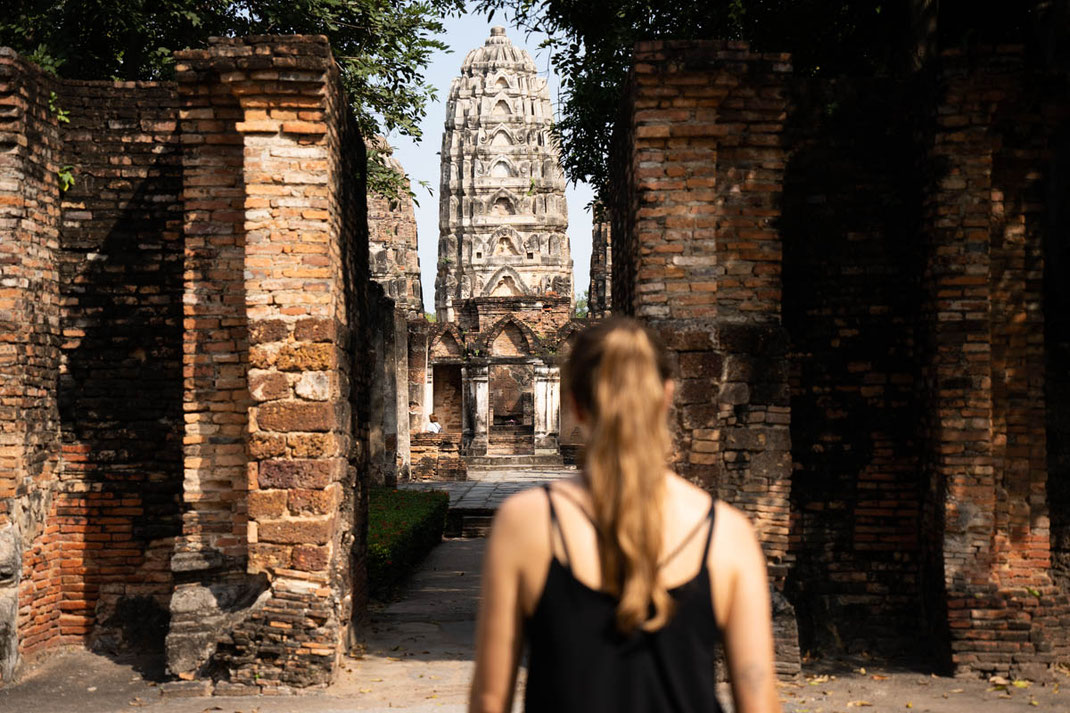
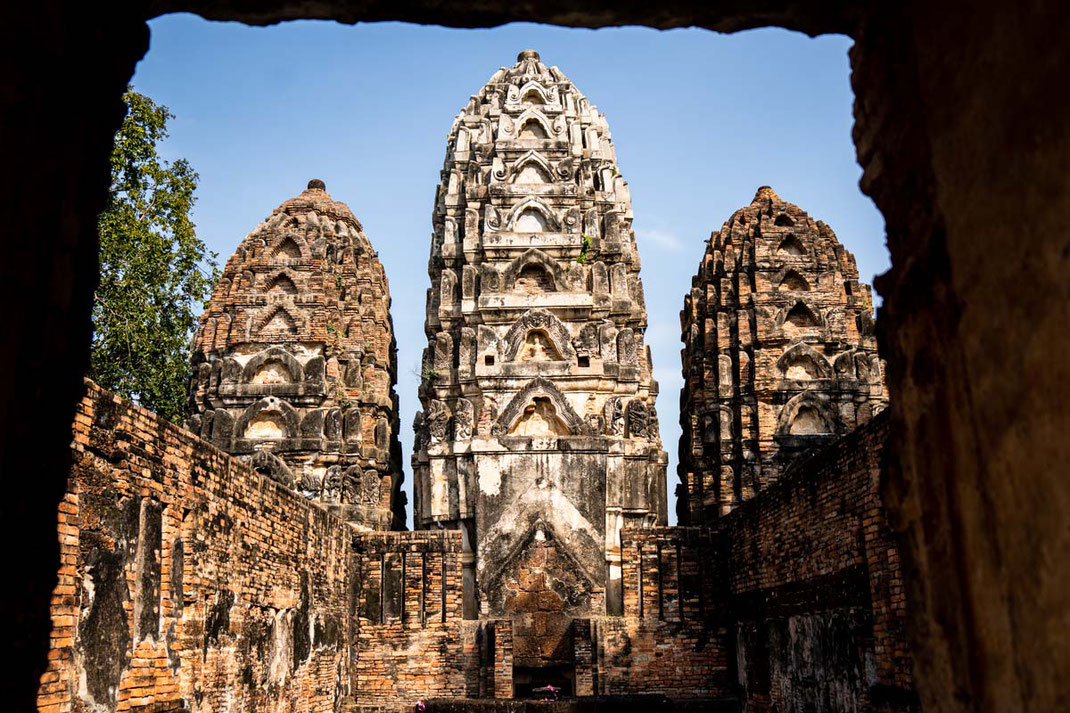
Some distance from Wat Mahathat are the remains of Wat Sri Sawai. They are easily recognizable by the three prangs that still tower up into the sky in good condition. Even at lunchtime, tourists rarely stray here. So, with a bit of luck, you can explore the temple all by yourself. This also applies to the rest of the ruins and before we know it, the afternoon is almost over. But we still have one last detour for you. You should definitely pay a visit to Wat Sri Chum, outside the historical part. A huge, seated Buddha statue measuring 11 meters peeps out through the thin slit in the wall.
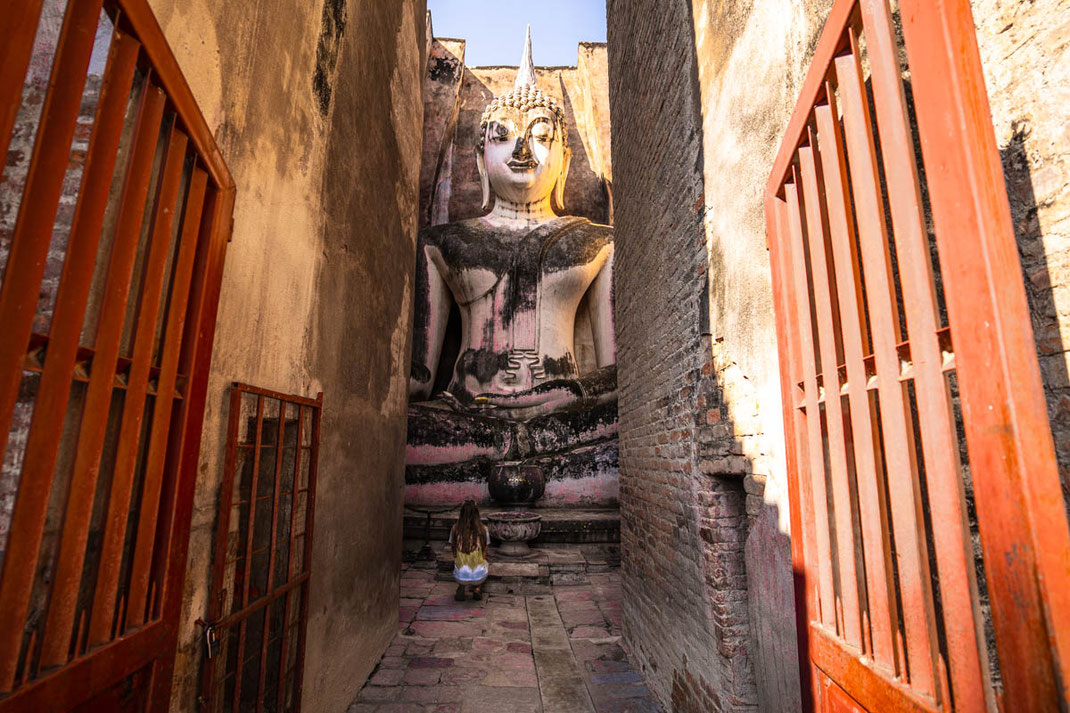


All in all, Sukhothai impressed us and reminded us a little of our previous visit to Ayutthaya. Even if the journey is arduous, you shouldn't shy away from it. And we have one last tip: there is a Win bus station at the entrance to the historic city. From here, there are daily buses to the cities of Bangkok, Ayutthaya and Chiang Mai, our next destination!



